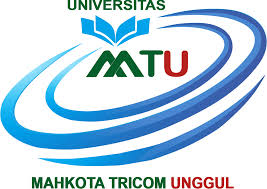Efforts to Alleviate Underdeveloped Areas by Clustering Regional Characteristics in Indonesia
DOI:
https://doi.org/10.55927/ministal.v2i4.5531Keywords:
Alleviate Underdeveloped Areas, Clustering, EconomicAbstract
This study aims to cluster the underdeveloped regions in Indonesia according to the criteria of the underdeveloped indicator to mitigate the underdeveloped regions in Indonesia. This research was conducted to help the various efforts made by the government to deal with the underdeveloped regions, by grouping the underdeveloped regions, it is hoped that the government can focus on increasing the dominant criteria in the regions according to the cluster. The grouping method used is K-means with the results of 62 underdeveloped districts in Indonesia divided into 3 clusters. The first cluster includes 23 districts grouped based on human resource criteria, the second cluster consists of 28 districts based on infrastructure/facilities criteria, and the third cluster consists of 11 districts based on economics criteria.
Downloads
References
Ariansyah, K., Barsei, A. N., Syahr, Z. H. A., Sipahutar, N. Y. P., Damanik, M. P., Perdananugraha, G. M., Dunan, A., Nupikso, D., Hidayat, D., & Mudjiyanto, B. (2023). Unleashing the potential of mobile broadband: Evidence from Indonesia’s underdeveloped regions on its role in reducing income inequality. Telematics and Informatics, 82, 102012.
Cheshmehzangi, A., Butters, C., Xie, L., & Dawodu, A. (2021). Green infrastructures for urban sustainability: Issues, implications, and solutions for underdeveloped areas. Urban Forestry & Urban Greening, 59, 127028.
Huang, F., Cao, Z., Guo, J., Jiang, S.-H., Li, S., & Guo, Z. (2020). Comparisons of heuristic, general statistical and machine learning models for landslide susceptibility prediction and mapping. Catena, 191, 104580.
Nabila, S. P., Ulinnuha, N., & Yusuf, A. (2021). Model Prediksi Kelulusan Tepat Waktu Dengan Metode Fuzzy C-Means Dan K-Nearest Neighbors Menggunakan Data Registrasi Mahasiswa. Network Engineering Research Operation, 6(1), 38–46.
Otok, B. W., Rachmawati, D. S., Purnami, S. W., & Mahpolah, M. (2021). Poisson regression modeling of diarrhea events in pasuruan regency with maximum likelihood estimates and generalized method moment. International Journal of Preventive Medicine, 12.
Otok, B. W., Suharsono, A., Purhadi, P., Standsyah, H. A. A., & Al Azies, H. (2022). Partitional Clustering of Underdeveloped Area Infrastructure with Unsupervised Learning Approach: A Case Study in the Island of Java, Indonesia. Journal of Regional and City Planning, 33(2), 29–48.
Prasetya, A. A. (2021). SST., M. Ec. Dev. Tsuraya Mumtaz, SST. Novia Dwima Santi, S. Tr. Stat.
Prokhorov, A. V, Gubin, M. Y., Shesterikov, A. V, Arsenin, A. V, Volkov, V. S., & Evlyukhin, A. B. (2023). Lasing Effect in
Symmetrical van der Waals Heterostructured Metasurfaces Due to Lattice-Induced Multipole Coupling. Nano Letters.
Purwandari, A., & Wahyuningtyas, D. T. (2017). Eksperimen model pembelajaran teams games tournament (tgt) berbantuan media keranjang biji-bijian terhadap hasil belajar materi perkalian dan pembagian siswa kelas ii sdn saptorenggo 02. Jurnal Ilmiah Sekolah Dasar, 1(3), 163–170.
Soemartini, S., & Supartini, E. (2017). Analisis K-Means cluster untuk pengelompokan kabupaten/kota di Jawa Barat berdasarkan indikator masyarakat.
Standsyah, R. E., Otok, B. W., & Suharsono, A. (2023). Estimation of poverty model effect size in Indonesia using meta-analytic structural equation modeling (MASEM). AIP Conference Proceedings, 2588(1).
Talakua, M. W., Leleury, Z. A., & Taluta, A. W. (2017). Analisis cluster dengan menggunakan metode k-means untuk pengelompokkan Kabupaten/Kota di provinsi maluku berdasarkan indikator indeks pembangunan manusia tahun 2014. BAREKENG: Jurnal Ilmu Matematika Dan Terapan, 11(2), 119–128.
Wei, Y.-M., Chen, K., Kang, J.-N., Chen, W., Wang, X.-Y., & Zhang, X. (2022). Policy and management of carbon peaking and carbon neutrality: A literature review. Engineering, 14, 52–63.
Wu, B., Gu, Q., Liu, Z., & Liu, J. (2023). Clustered institutional investors, shared ESG preferences and low-carbon innovation in family firm. Technological Forecasting and Social Change, 194, 122676.
Xiao, K., Lin, Y.-H., Zhang, M., Oliver, R. D. J., Wang, X., Liu, Z., Luo, X., Li, J., Lai, D., & Luo, H. (2022). Scalable processing for realizing 21.7%-efficient all-perovskite tandem solar modules. Science, 376(6594), 762–767.
Yu, W., & Sepehrnoori, K. (2013). Simulation of gas desorption and geomechanics effects for unconventional gas reservoirs. SPE Western Regional & AAPG Pacific Section Meeting 2013 Joint Technical Conference.
Zhu, B., & Stülke, J. (2018). Subti Wiki in 2018: from genes and proteins to functional network annotation of the model organism Bacillus subtilis. Nucleic Acids Research, 46(D1), D743–D748.
Downloads
Published
How to Cite
Issue
Section
License
Copyright (c) 2023 Suyanto, Wiwik Budiarti, Rahmawati Erma Standsyah, Dendy Syahru Ramadhan

This work is licensed under a Creative Commons Attribution 4.0 International License.










.png)



















